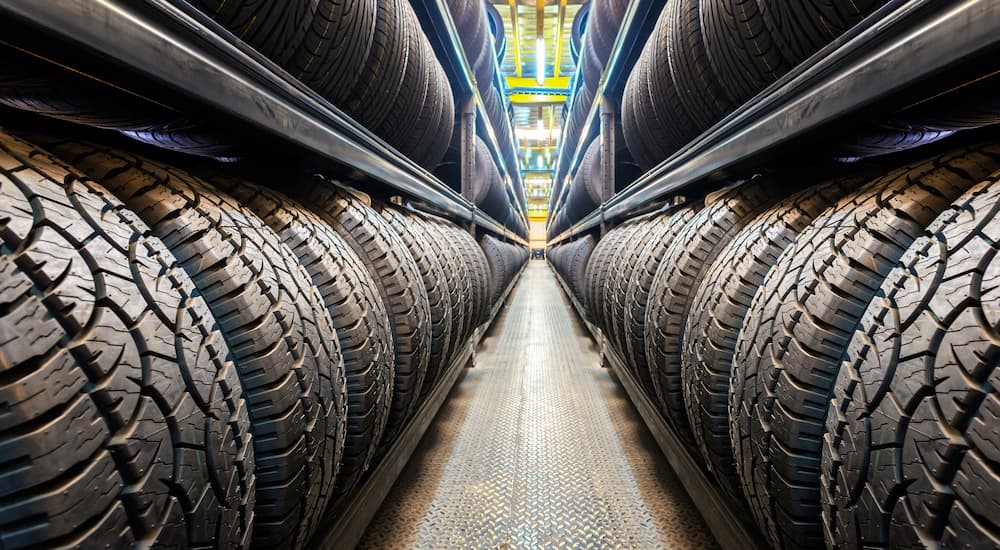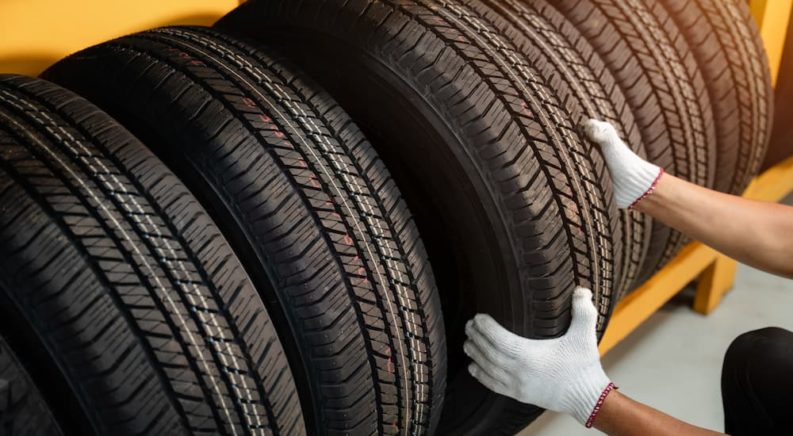Shopping for new tires can be overwhelming. Even after you cut through all the industry-specific jargon, you’re still left sifting through a long list of brands, with each claiming to outperform the others. It can often be difficult to separate the marketing from the facts and can leave drivers wondering: do tire brands matter? In truth, tires are like many other consumer goods: there’s not a huge difference between the top brands on the market, and “best” usually comes down to a matter of taste or a desire for specific features. However, once you leave the upper tier and start to explore some of the budget brands, quality and performance see a dramatic drop-off.
There’s nothing wrong with cheaper tires, and they might be the perfect solution for certain applications, but in general, they are simply not going to last as long or perform as well as the top brands. Let’s take a look at some of the best brands on the market, examine the difference between high-end tires and budget brands and learn what all that information stamped on the side of the tire can tell you about longevity and performance. That way, when it comes time to start searching for a “tire shop near me,” you will have the information you need to make an informed choice.
UTQG To The Rescue
Developed by the National Highway Traffic Safety Administration in 1978, Uniform Tire Quality Grading (UTQG) is a handy way to compare the treadwear, temperature resistance, and traction of different tires. This three-part rating can be found on every tire manufactured in the United States since the late 1970s, with the exception of dedicated winter tires and those made for motorcycles, buses, trailers, and large trucks.
A typical UTQG might look something like Treadwear 300, Traction AA, Temperature A, so let’s break that down. The treadwear rating is a numerical value that usually ranges from 100 up to 700 and is based on a test performed using a baseline tire for comparison. In short, the manufacturer tests the baseline tire on a closed track under controlled conditions and sets its treadwear rating at 100. If the tread on the comparison tire lasts twice as long as the baseline tire, it receives a treadwear rating of 200. If it lasts three times as long, it’s rated at 300, and so on. It’s rare to find tires with a treadwear rating of less than 100 or above 700, though there are some exceptions, such as the Hankook Kinergy PT H737 touring all-season tire, which posts an impressive 860 treadwear rating.
A tire’s traction is rated using an alphabetic grading scale that ranges from AA to C on most passenger vehicles. This rating measures a tire’s ability to stop on wet surfaces under controlled conditions and does not take into account factors like cornering, hydroplaning, acceleration, or stopping on a dry surface. The actual formula used to determine a tire’s traction is a bit complex, measuring its coefficient of friction on both concrete and asphalt surfaces to deliver a G force rating between .54 and .26, with the higher number representing better stopping power. A tire rated AA will have an asphalt g force above .54 and a concrete g force of .38, while a C-rated tire would clock in at less than .38 and .26, respectively.
Finally, the UTQG temperature rating measures the tire’s ability to disperse heat at speed. A tire with a temperature rating of A can effectively dissipate heat at speeds greater than 115 mph, while a B-rated tire can only safely withstand temperatures up to 100-115 mph. C is the lowest temperature rating, maxing out at 85-100 mph. Tires with a temperature rating lower than C cannot be sold for passenger vehicles in the United States.

What’s in a Name?
While name recognition isn’t always the surest sign of quality, it’s a useful indicator in the tire world. If you’ve ever seen a tire brand splashed across the hood of an F1 car, it’s a good indication that the company has not only a healthy advertising budget but also the R&D, testing facilities, and quality control to back up its premium reputation. Bridgestone, Goodyear, Michelin, and Continental are generally regarded as the top four premium tire manufacturers, offering the type of exceptional performance and reliability that have allowed these brands to become household names. While all four are undisputed leaders in the market, they do vary slightly in terms of longevity, tread life, and performance, so let’s examine each one a little closer.
Bridgestone
As the world’s largest tire manufacturer, Bridgestone must be doing something right. The Japanese company, which also owns the Firestone brand, has built a reputation for quality with durable, high-performing tires that stand up well to the test of time. They’re excellent at resisting wear and blemishes, making Bridgestone tires one of the best investments a driver can make. With 181 production facilities across 24 countries, it’s never difficult to find a set of Bridgestone tires that fit your demands, and their reputation for durability means they’re even quite popular on the used market. The fact that Bridgestone’s tires tend to offer higher-than-average UTQC ratings speaks volumes, with the brand’s tires offering impressive performance even at higher temperatures and speeds.
Michelin
Boasting the most easily-recognizable mascot of any major tire brand, Michelin trails closely behind Bridgestone as the world’s second-largest tire manufacturer. These tires stack up well against the top dog, offering comparable durability with long-lasting tread that will continue to perform well year after year. Like Bridgestone, these tires are popular on the used market owing to the brand’s stellar reputation for longevity. What really makes Michelin stand out from the pack is the brand’s generous warranty program, which includes a 60-day satisfaction guarantee, three years of free roadside assistance, and a limited mileage warranty for treadwear. The brand’s premium tires might be a big investment upfront, but between Michelin’s commitment to reliability and the extensive warranty program, they represent some of the best value in the market.
Goodyear
Founded over 120 years ago, Goodyear is America’s homegrown tire manufacturer and the third-largest in the world. The brand’s all-season tires are some of the best on the market, offering an ideal mix of traction, tread life, and the ability to perform well in a variety of conditions. Goodyear’s tires have been recognized for their exceptional resistance to wear, regularly coming out on top in tests performed by Consumer Reports and the like. Drivers seeking a ringing endorsement of the brand’s tires need to look no further than the next NASCAR race, where Goodyear tires can be seen reaching speeds of 200-plus mph on a weekly basis. The fact that some of the world’s top drivers choose to roll on Goodyears also speaks to the brand’s reputation for grip and responsive handling.
Continental
Rounding out the top four, German tire manufacturer Continental is known for its fusion of performance and affordability, offering a range of tires that stack up well against even the highest-end competition without breaking the bank. Critics and drivers cite tires’ ability to deliver an exceptionally smooth ride without sacrificing handling, making them the go-to choice for many luxury brands like BMW and Mercedes-Benz. Continental tires have also been commended for their stopping distance, excelling in both wet and dry conditions. For drivers seeking the ideal mix of safety, comfort, and affordability, Continental is hard to beat. They might not offer the same long tread life as some of their more premium competition, but given the lower-than-average price, it’s a sacrifice many drivers are willing to make.

What’s the Difference?
Aside from the cost, what exactly is the difference between premium tires and their budget counterparts? We’ll break it down into four categories and see how different tires might affect your driving experience and your wallet.
Longevity
A tire’s performance often comes down to its chemical composition. While we tend to think of tires as being made of rubber, natural rubber is only one of the components that go into the manufacturing process. Today’s tires are actually a mix of natural rubber, synthetic rubber, chemicals, metals, and textiles working together to produce a smoothly-rolling, puncture-resistant surface for you to drive on. The higher-end the tire, the higher-end the components, with premium tires using resilient rubber compounds that are excellent at resisting wear and tear. Budget tires tend to use softer rubber compounds that break down more easily, resulting in shorter tread life and an overall less hardy tire. Budget tires might seem like a bargain compared to some of the premium options out there, but once you factor in how often they’ll need to be replaced, they might actually turn out to be a worse deal in the long run.
Control
Out of all the factors that separate premium tires from budget options, there’s perhaps none more important than control. While fuel economy, longevity, and comfort are all important factors to consider, they pale in comparison to the ability to comfortably and safely control your vehicle at high speeds. Unsurprisingly, higher-end tires tend to handle better than cheaper options. This largely comes down to their composition and construction, which are designed to handle a variety of challenging road conditions. They have better-constructed tread that can quickly and safely wick away moisture which can be the difference between making that turn and hydroplaning your way into the adjacent lane. Budget tires, on the other hand, might work well on dry roads, but performance can fall off rapidly when snow, ice, or loose surfaces come into play. If you’re the type of driver who regularly navigates these conditions, a tire’s ability to improve control should be at the top of your list.
Fuel Economy
When it comes to tires and fuel economy, the key term is “rolling resistance.” This basically describes the amount of energy it takes to keep a tire rolling, with lower rolling resistance meaning that a tire has an easier time maintaining its speed. Premium tires typically offer lower rolling resistance than budget options, meaning the engine doesn’t need to work quite as hard. This results in improved fuel economy, allowing drivers to get more bang for their buck every time they hit the pump. This can also improve a tire’s longevity since lower rolling resistance means less heat is generated between the tire and the road, resulting in longer tread life. In addition to lower rolling resistance on the tread, premium and mid-range tires often have stronger sidewalls, which can go a long way in improving fuel economy. Rolling resistance varies between higher-end tires, but many brands like Goodyear and Bridgestone now produce low-resistance tires specifically aimed at improving fuel economy.
Comfort
Thanks to the use of premium materials and high-end construction techniques, premium tires offer a decidedly smoother ride than some of the cheaper options on the market. These tires are generally made using thicker rubber, which can be very noticeable when it comes to comfortably navigating bumps in the road. Cheaper tires often feature less material between you and the road, meaning you’re more likely to feel every pothole and frost heave reverberate all the way from the asphalt into the seat of your pants. In the long-term, these reverberations can have a knock-on effect throughout the vehicle as a whole, prematurely wearing out the suspension while taking its toll on your shocks and springs. Then there’s the matter of auditory comfort. Cheaper tires tend to be louder than premium options, which can be a dangerous distraction on the road. Of course, a premium tire isn’t always quieter as tread depth tends to be an equally important factor, but generally speaking, the more you pay, the less of a racket you’ll make.
Not All Tires Are the Same
When it comes to choosing tires, the brand name isn’t the most important factor, but it’s up there. While it’s difficult to make generalizations given the wide range of tires available from each manufacturer, the truth is that the more you spend on a tire, the better it’s probably going to perform. Of course, consumers have to weigh their own priorities and decide which metrics are the most relevant to their own needs and driving style, whether it be tread life, comfort, handling, or fuel economy. Regardless of the brand, UTQG is a good way to compare different tires. However, it is still just a starting point, and brand names can add a bit more context.

